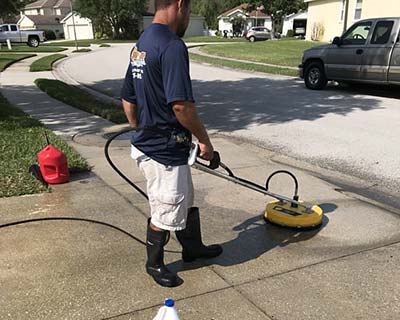How to Seal Pavers

Unsealed pavers are subject to fading, sand loss, staining and can sometimes develop mildew and weeds growth. With proper maintenance and sealing, your pavers will be far more likely to be durable and long lasting and have a great appearance.
The selection of sealants for concrete, brick and natural stone interlocking pavers is typically based on the finish and degree of stain-resistance you want. Most paver products benefit from a sealant that has sand stabilization properties.
Choose a good quality sealer product as it will protect the surfaces from oil, fading and stains, as well as constant sand erosion. It’s a good idea to hire experts like the ones at GulfCoast Brick Pavers, Inc., for paver sealing. But if you plan to handle this job yourself, it’s important to know the right steps.
How to Seal Pavers
- Surface Preparation- Newly installed concrete pavers should be allowed to cure for at least 14 days or more before you seal them. It’s best to follow the paver manufacturer’s recommendations in this matter.
- Cleaning- Prior to the application of any sealer products, the surface must be thoroughly cleaned with the use of a pressure washer. Remove all the dirt, debris, grease, oil, sap, efflorescence, previous sealers, and paint. Use an alkaline-base paver cleaner in this process. Mix the detergent concentrate as per the label instruction depending on how severe the surface soils are.
Note-For hard water deposits or efflorescence stains, use a special efflorescence remover. Its slightly acidic content is effective in removing this buildup. When you use acid for any reason, the surface would have to be neutralized prior to the sealant application. Always read the cleaning product cautions and instructions with the product you use. - Sanding- Tamp down the joint sand and sweep all the sanded areas for new paver installations. Make sure the sand is at least 1/8” below the paver surface.
- Clear Debris- Remove all the fine sand powder and residue with a blower and a broom.
- Drying- If there is any moisture on or in the pavers, allow it to dry for a minimum of 24 hours. Allow 48 hours more if you have used a pressure washer or if the temperature is cool.
Note-For best results, all the sand should be completely dry before sealing. The recommendation is that you test the sealer in a small section first. Always make it a point to read product labels and directions before using any sealer products. - Seal- Use a garden-type sprayer to apply the paver sealant on the surfaces. Apply a heavy saturating sealant coat. Make sure all the joints are flooded. This maximizes sealer soaking into the dried sand. Squeegee excess product down into the sanded joints using a large rubber/foam squeegee. Avoid any puddling on the surfaces. You can apply an optional second thin sealcoat after two hours if required to increase protection &enhance the finish.
- Sealant Drying- After the final coat, allow the sealant to dry for 2 hours before allowing any foot traffic. Limit all moisture &vehicular traffic for 72 hours while the sealer is curing.
Companies like GulfCoast Brick Pavers, Inc. provide high quality paver sealing services at cost-effective pricing.
"MORE ARTICLES"
How to Clean PaversHow to Install Pavers
